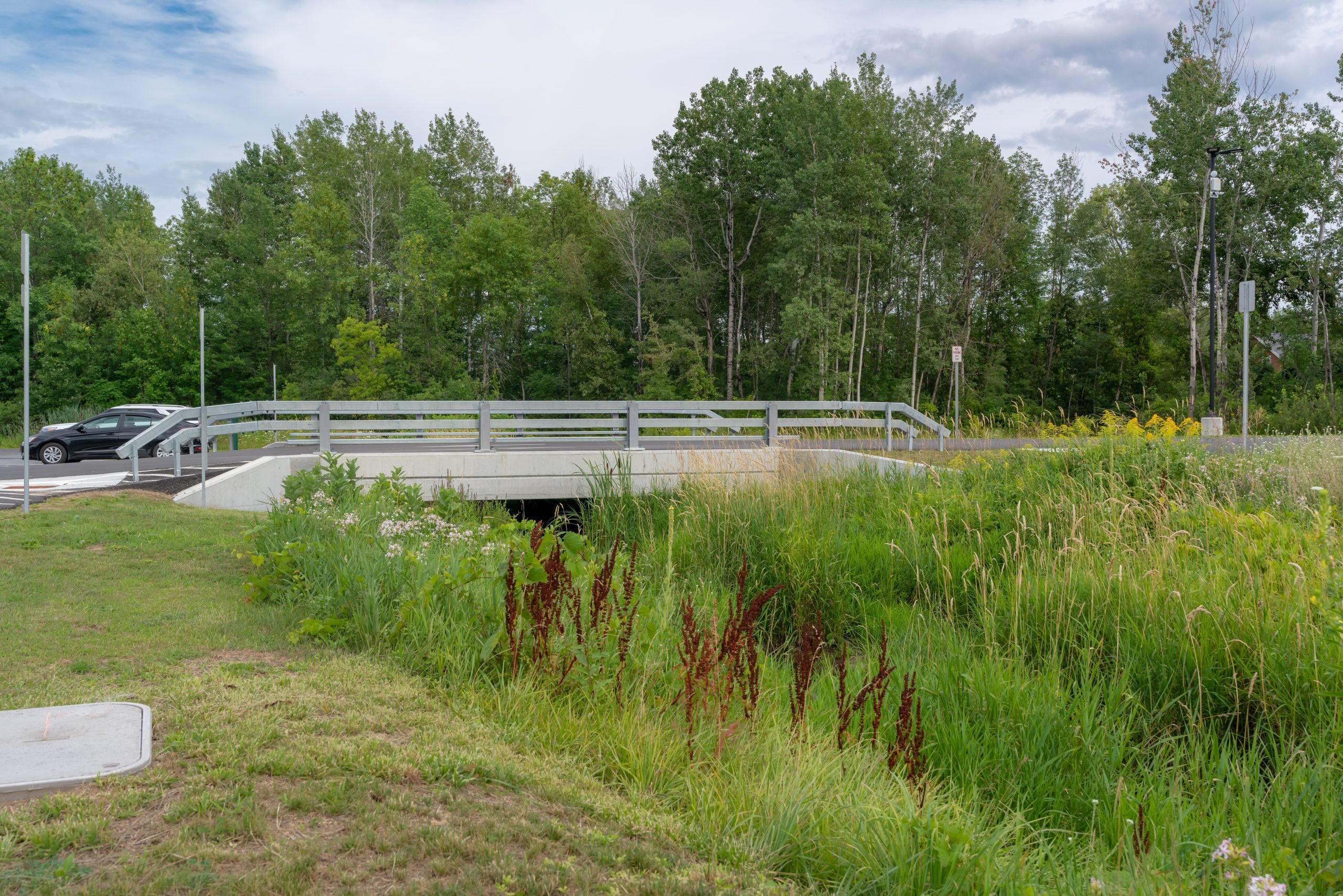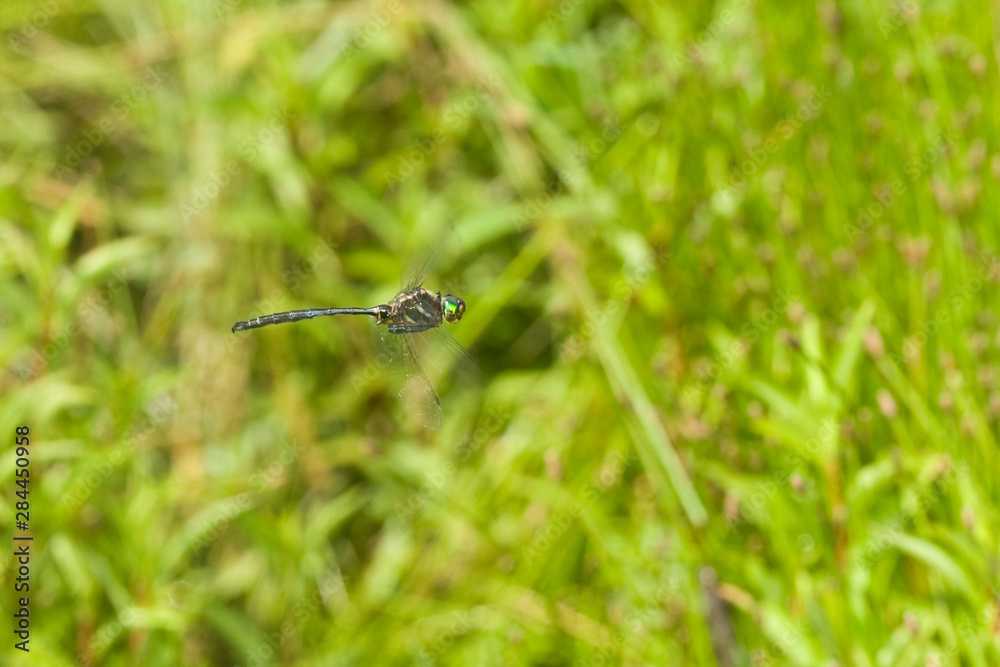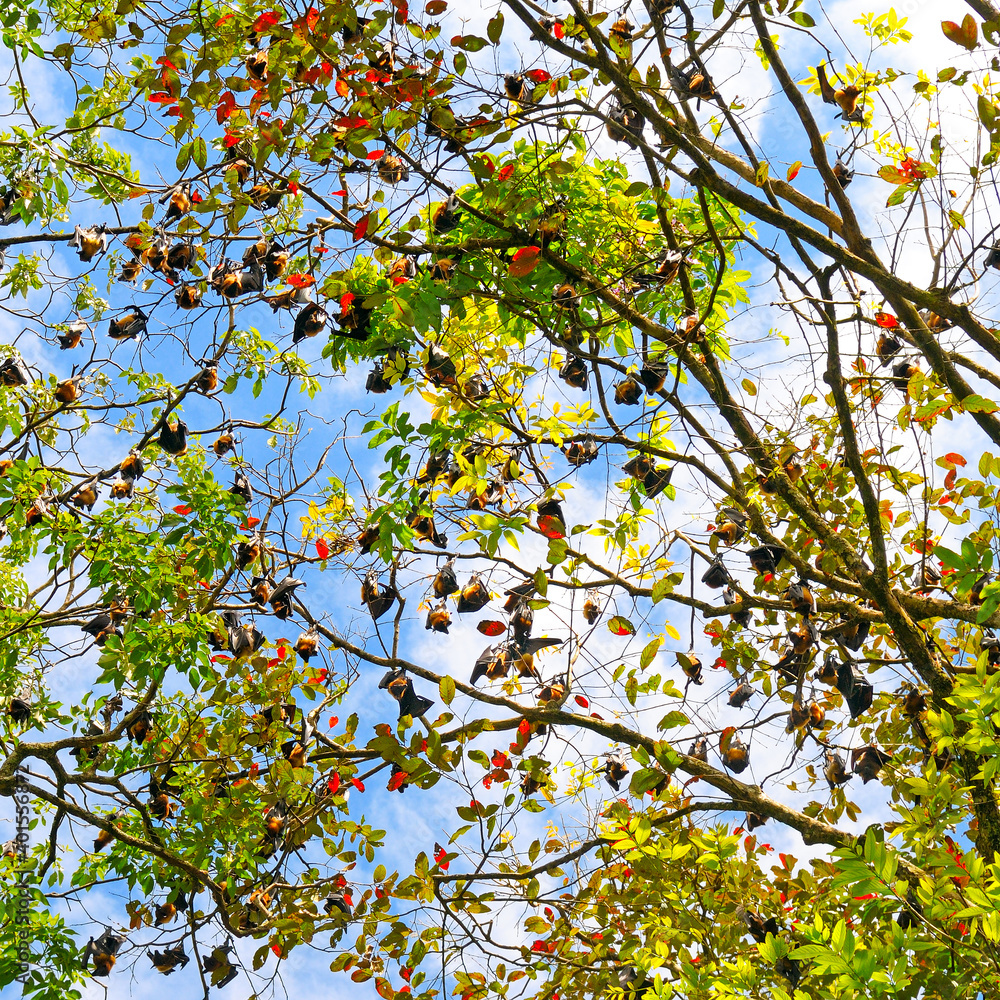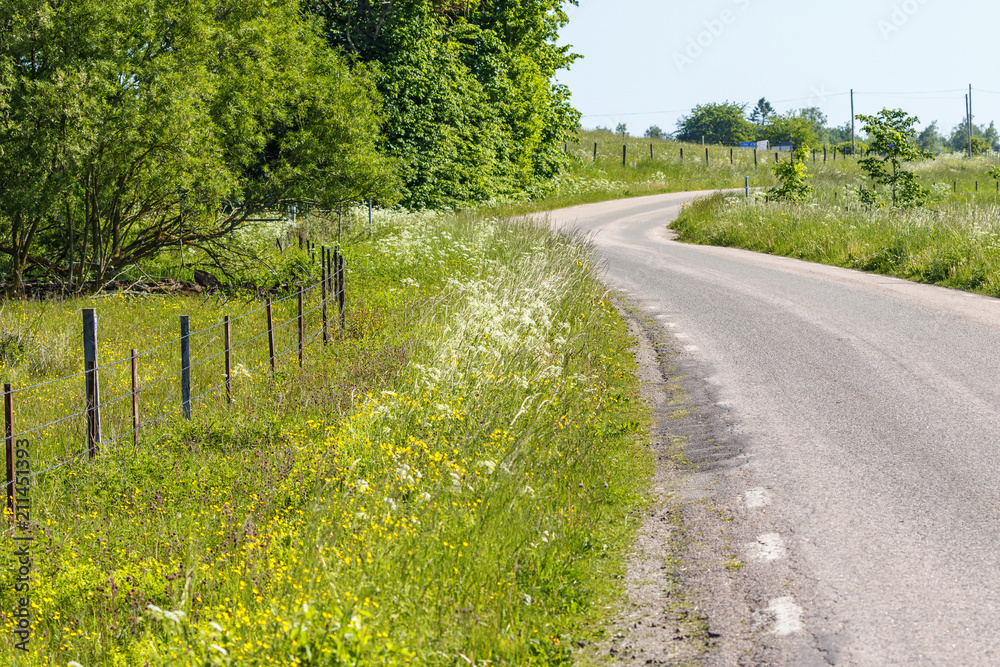Search for articles or browse our knowledge portal by topic.
Section 7 of the Endangered Species Act
Section 7 of the Endangered Species Act (ESA) requires KYTC to facilitate the conservation of endangered and threatened species. Under the ESA, the Cabinet must verify project-related activities are not likely to jeopardize the continued existence of endangered or threatened species or adversely modify the critical habitat of those species. To accomplish this, KYTC works to avoid or minimize impacts to species or critical habitat. Where this cannot be done, the Cabinet must offset losses through compensatory mitigation (e.g., paying into the Imperiled Bat Conservation Fund). The article provides a high-level overview of Section 7 for KYTC project managers (PMs). Information in this article will help PMs navigate the Section 7 process and collaborate effectively with Division of Environmental Analysis (DEA) subject-matter experts (SMEs).

PMs can apply the following best practices to streamline the Section 7 process and accelerate project delivery:
- Avoid project alignments that traverse streams or critical habitat. Of course, this is not always possible — especially on bridge projects. Nonetheless, avoiding these locations can eliminate the need for drawn-out ecological investigations (e.g., biological assessments) which delay project development.
- Maintain robust communication with DEA SMEs throughout project development. SMEs have the knowledge to help PMs handle Section 7 and identify options for avoidance, minimization, and compensatory mitigation.
- Leverage programmatic agreements where possible as these help KYTC clear as many projects as possible in-house. KYTC and FHWA-Kentucky have established two programmatic agreements — one related to bat habitat and one focused on no-effect determinations. The latter covers 15 project types that by definition do not impact species or critical habitat. Sections 5 and 6 review these in detail.
- Reach out to the DEA SME as soon as possible if the project area or scope are modified (e.g., crossing streams in a different location, disturbing forested areas not within the initial project footprint). SMEs can reevaluate the project in-house to identify impacted species or critical habitat and determine whether permits need to be redone.
- When in doubt about how to address Section 7–related issues, ask for guidance and assistance from DEA SMEs — their job is to help.
DEA SMEs rely on several forms of ecological assessment to determine whether a project will directly or indirectly impact endangered or threatened species or critical habitat. An important first step is for the PM to engage the District Environmental Coordinator (DEC). Once the PM contacts the DEC about reviewing a project, the DEC asks DEA SMEs to look at the project and determine what is necessary to secure necessary environmental clearances. Table 1 summarizes the key features of each form of environmental assessment, including purpose, outcomes, and the period during which study outcomes are valid.
2.1 Habitat Assessments
All projects begin with a habitat assessment (HA) to identify threatened or endangered species and critical habitat in the project area. To initiate this process, PMs submit the following information to the DEC, who will convey it to the appropriate DEA SMEs:
- Project Footprint
- Schedule
- Funding Sources
SMEs perform a background review, starting with a search of the US Fish & Wildlife Service’s (USFWS) Information for Planning and Consultation (IPaC) planning tool, to identify listed species or critical habitat within the project footprint. Giving SMEs a file containing the project footprint improves the accuracy of IPaC search results.
In some cases, information from this review is sufficient to reach a no effect finding, which means a project will have no impact on listed species or critical habitat. However, if the review does not reach this conclusion the SME notifies the PM and project team that field investigations are necessary.
If an HA concludes with a no effect finding, a DEA SME completes a form that documents this determination. Different forms are used based on funding source. Form TC 58-54 is completed for projects funded with federal dollars, while Form TC 58-55 is used on state-funded projects.
The results of an HA and any associated field investigations are valid for five years.
2.2 Ecological Overviews
Ecological overviews are typically reserved for larger projects that have several alternatives or are expected to undergo in-depth National Environmental Policy Act (NEPA) analysis later on in project development. Ecological overviews document sensitive environmental conditions along a project corridor, determine if further study is warranted, and may involve developing a plan to address project impacts. SMEs rely on a combination of office review (e.g., literature review, records checks) and field investigations to identify where project activities could potentially impact features such as unique or critical habitat, streams, wetlands, special-use waters, groundwater, special aquatic sites, drinking water sources, floodplains, or karst landscapes.
The findings of an ecological overview may be documented on Form TC 58-48 and added to a project’s environmental overview.
2.3 Ecological Base Studies
NEPA mandates ecological base studies on large-scale federally funded projects where an HA is not sufficient. Large-scale projects are those that require a Categorical Exclusion Level 3 or above and have multiple alternatives. Roughly 5% of KYTC’s projects fall into this category.
Ecological base studies identify for each alternative potential impacts to threatened or endangered species, unique/critical habitat, and water quality. SMEs review relevant literature and resource listings, beginning with a search of IPaC and then determine appropriate methods for field investigations. In addition to assessing the ecological resources in a project area, ecological base studies estimate the number of wetland acres impacted by each alternative and may investigate water quality or involve aquatic sampling.
The findings of an ecological base study remain valid indefinitely. However, if changes in the project scope will significantly alter the anticipated impacts, the study is revisited.
2.4 Biological Assessments
Biological assessments are done if an HA or ecological base study concludes that federally listed species could potentially occur in the project area or when the project area includes suitable habitat. They are also required for all major construction projects (those needing an Environmental Impact Statement or Record of Decision). If a biological assessment is needed, PMs must let DEA know when it should be completed by.

In terms of the timeline for completing biological assessments, requirements vary by environmental document type:
- On Categorical Exclusion Minor Projects and Categorical Exclusion Level 1 – 3 projects, biological assessments must be completed before requesting construction authorization.
- For Environmental Assessment (EA) or Finding of No Significant Impact (FONSI) projects, consultation must be done before requesting right-of-way (ROW) authorization.
- For Environmental Impact Statement (EIS) and Record of Decision (ROD) projects, consultation should be done before the ROD is issued.
A combination of literature reviews and field investigations is used to execute biological assessments. Information from these reviews along with USFWS guidelines dictate what type(s) of sampling methods are used and when field investigations performed. For each species investigated, the biological assessment must explicitly recommend one of the following findings: (a) no effect; (b) may affect, not likely to adversely affect; or (c) may affect, likely to adversely affect.
The findings of a biological assessment are valid for five years from the date of field investigations that resulted in determinations.
2.5 Biological Opinions
A BA that returns a may affect, likely to adversely affect finding for any federally endangered species could trigger a formal consultation process with the USFWS that can last up to 135 days. After consultation, the USFWS develops a biological opinion that determines whether a project will jeopardize a species. Jeopardize means that a project will directly or indirectly reduce a species’ population, reproduction, or distribution, lessening the chances of recovery in the wild.
Typically, the biological opinion process involves dialogue between KYTC, USFWS, FHWA, and other relevant stakeholders. The goal of these conversations is to identify a solution that is acceptable to all parties and offers the necessary protection to the species under consideration. It is critical for PMs to be respectful participants in these conversations. PMs can use their knowledge of a project (e.g., understanding of site constraints, justification for design) to explain why a decision has been made. In some cases it may be helpful to bring other Cabinet SMEs into the conversation (e.g., planners, designers, location experts) who can further illuminate the decision-making process.
Biological opinions remain valid unless changes in the project scope will alter the anticipated impacts or there is a change in the status of a species.
| Table 1 Summary of Ecological Assessments | ||
| Study Type | Purpose and Outcomes | Period Findings are Valid for |
| Habitat Assessment |
|
5 years |
| Ecological Overview |
|
Indefinite |
| Ecological Base Study |
|
Indefinite |
| Biological Assessment |
|
5 years |
| Biological Opinion |
|
Indefinite |
The Section 7 process remains unfinished if project waste areas have not been cleared. Proactive and early identification of waste areas can streamline project development and construction. In some cases, reusing waste areas that were cleared on earlier projects is an option. One option is to assign responsibility for identifying and clearing waste areas to contractors. But this carries significant risk as the contractor would have to take on the burden of navigating the Section 7 permitting process, which could result in project delays. PMs must remember waste areas are subject to all of the same Section 7 requirements as areas where roads or bridges will be built. Ideally, projects will have 2 – 3 sites cleared for waste dumping.
Several factors influence the timing of species surveys. Surveys may be delayed until more concrete plans are developed or because ROW needs to be acquired to access the survey area. Another key consideration is that some species can only be surveyed during certain periods of the year. KYTC maintains a database that lists surveying windows for threatened and endangered species.
On projects needing a species survey, PMs need to coordinate with DEA SMEs on timing and to decide whether to hire a consultant or take advantage of statewide contracts. The Cabinet has statewide contracts with several firms that can deliver ecological or biological consulting services and work on the Section 7 process.
KYTC’s programmatic agreement on the effects of transportation projects on the Indiana bat and gray bat establishes conservation measures for projects that impact up to 250 acres of suitable habitat. These measures benefit or promote species recovery and are done to avoid, minimize, and/or compensate for project effects to Indiana bats and gray bats. This section reviews requirements related to each species.
5.1 Indiana Bat — Avoidance and Minimization Measures
FHWA and KYTC use several avoidance and minimization measures to address project effects to Indiana bat habitat. These include (a) implementing best management practices (BMPs) to prevent non-point source pollution, control stormwater runoff, and minimize sediment damage; (b) restricting the removal of forested habitat between June 1 and July 31 to minimize potential effects on non-volant (i.e., flightless) bats; (c) leveraging the project review process to determine potential project impacts (see Box 1); and (d) contributing to the Imperiled Bat Conservation Fund to compensate for unavoidable adverse impacts to summer roosting and fall swarming habitats. KYTC’s Environmental Overview online map shows known Indiana bat habitat.

Box 1: KYTC Bat Habitat Review Process
Tier 1
A KYTC biologist or ecological consultant performs a habitat assessment to determine whether a project will directly or indirectly affect Indiana bat habitat. If no impacts are identified, the project has no effect. If the habitat assessment locates known or potential Indiana bat habitat, a DEA SME is contacted to investigate further.
Tier 2
The SME performs a detailed office assessment to identify potential hibernacula (locations where bats hibernate during the winter, such as caves or abandoned mines) as well as summer roosting, foraging, and commuting habitat. Potential habitat found within ½ mile of the project are further evaluated using a field assessment. Field assessments also assess bridges and culverts in the project area.
Many BMPs can help to avoid or minimize project impacts. For more information, consult Appendix B of the programmatic agreement or the Kentucky BMPs for Controlling Erosion, Sediment and Polluting Runoff from Construction Sites Planning and Technical Specifications Manual. Both publications are available on the Ecology and Permitting webpage. Common BMPs are summarized below. For more information on erosion control practices, see the HKP article Erosion Control — Field Applications.
- Non-Structural BMPs
-
- Maintain sediment control BMPs when sediment thickness reaches ½ depth of the BMP.
- Keep an adequate stock of straw erosion control blankets (ECB) and straw bales onsite throughout the project.
- Within seven days of concluding activities that disturb land, apply straw ECBs or seeding mulched with blown straw followed by crimping.
- Stabilize disturbed areas in advance of forecasted rain events.
- Perform erosion prevention and sediment control/stormwater pollution plan inspections at least once per week and within 24 hours of meteorological events that drop at least 0.5 in of rain.
The following issues must be addressed for the entire project or for each disturbed drainage area (DDA) when preparing DDAs for construction:
- Once construction begins, stabilize barren construction access areas with straw ECB or straw followed by crimping.
- At a project’s outset, inspect all DDAs for source areas of stormwater pollutants. Implement BMPs on impacted areas to prevent pollutants from infiltrating stormwater. Inspect areas that have not opened by contractors at least once per month to determine whether BMPs are needed to prevent pollutants from entering stormwater.
- Consider the use of the following BMPs when clearing and grubbing:
- Leave areas undisturbed.
- Install silt basins to capture silt from large areas.
- Use Type A silt traps for small areas.
- Use Type C silt traps in front of existing and drop inlets that will be saved.
- Construct diversion ditches to direct sheet runoff to silt basins or traps, or to divert runoff around disturbance areas.
- Install brush and/or other barriers to slow or diver runoff.
- Use silt fences to catch sheet runoff on short slopes. Multiple rows of silt fencing may be used for longer slopes.
- Lay temporary mulch is areas where other protective actions are not appropriate.
- Protect sinkholes and outfalls with spill containment areas.
5.2 Indiana Bat — Compensation Measures
KYTC compensates for unavoidable, adverse impacts to Indiana bat summer roosting and fall swarming habitat by paying into the Imperiled Bat Conservation Fund. The amount paid into the fund is calculated using this formula:
Number of Acres Impacted x Median Land Cost x Mitigation Multiplier
If a project impacts a bridge that provides habitat, KYTC assumes total impacts = 0.10 acre. Table 2 lists the mitigation multipliers that are used to calculate payment obligations. These multipliers are higher during the active season, which runs from spring through mid-fall. A multiplier is selected based on when a contractor intends to clear trees. KYTC can alter tree-cutting dates or the amount it will pay up to two months before the letting date. After this point, a Special Note is needed. A DEA SME creates and inserts Special Note(s) into proposals. PMs benefit from coordinating closely with SMEs on tree cutting dates and keeping them informed of changes in the project schedule and letting dates.
Money paid into the IBCF comes from construction or design funds when the project is let to construction. PMs should inform DEA SMEs (biologists) where funds should be taken from. If the PM does not suggest a funding source, typically construction funds are used.
| Table 2 Mitigation Multipliers | ||||
|---|---|---|---|---|
| Habitat Type | Active Season (*) | Active Dates | Inactive Season | Inactive Dates |
| Known Swarming | 2.25 (2.75) | April 1 – November 14 | 1.75 | November 15 – March 31 |
| Known Summer | 1.75 (2.25) | April 1 – October 14 | 1.25 | October 15 – March 31 |
| Unsurveyed | 1.0 (1.5) | April 1 – October 14 | 0.5 | October 15 – March 31 |
(*) Number in parentheses applies to tree removal in June and July only.
5.3 Indiana Bat — Projects Not Covered
The programmatic agreement does not explicitly cover projects that have the following impacts:
- Projects that require the removal of forested habitat between June 1 and July 31.
- Projects where caves, mine adits, rock shelters, and/or karst features provide winter habitat or summer roosting habitat and are within ½ mile of the project area.
- Projects that affect a bridge structure that contains or is reasonably likely to support a maternity colony.
- Projects with impacts to a known bat maternity roost tree.
- Projects with impacts within ½ mile of known bat hibernacula.
- Projects that affect > 250 acres of suitable forested habitat.
For projects with one or more of these impacts, KYTC consults with the U.S. Forest Service Kentucky Ecological Services Field Office to determine if the programmatic agreement applies.
5.4 Gray Bat — Avoidance and Minimization Measures
FHWA and KYTC have adopted two avoidance and minimization measures to reduce project impacts on gray bats: (a) limit tree clearing along streams as much as possible, avoid or minimize impacts to streams during construction, and implement BMPs to prevent non-point source pollution, control stormwater runoff, and minimize sediment damage; and (b) use the tiered project review process (see Box 1) to evaluate project impacts. If suitable winter habitat and/or summer roosting habitat is located within ½ mile of the project, or the project will affect a bridge structure that is known or reasonable likely to support maternity and/or bachelor colonies of gray bats, KYTC will request a project-specific consultation with the USFWS Kentucky Field Office.
BMPs used to avoid or limit impacts to gray bat habitat are the same as those listed in Section 5.1 for the Indiana bat.
5.5 Gray Bat — Compensation Measures
KYTC offsets unavoidable adverse impacts to gray bat roosting habitat found on bridges by funding the protection of known gray bat maternity sites and surrounding habitat.
FHWA and KYTC have established a programmatic agreement for making no effect determinations for listed species and/or their critical habitat. Under the agreement, 15 project types (listed below) are considered to have no effect on listed species.
Projects Covered By the FHWA – KYTC No Effect Programmatic Agreement
- General highway maintenance (e.g., filling potholes, crack sealing, mill and resurfacing, joint grinding/milling).
- Guardrail replacement that does not require new bank stabilization.
- Replacement of traffic signals within existing ROW.
- Installation or maintenance of signs or pavement markings within the existing ROW.
- General pavement marking or line painting projects.
- Installation of raised pavement markers.
- Mowing or brush removal/trimming projects within existing ROW.
- Improvements to existing KYTC/county maintenance facilities.
- Study-type projects (e.g., feasibility studies).
- Installation of new fencing, signs, small passenger shelters, traffic signals, or railroad warning devices in areas without habitat.
- Acquisition of scenic easements.
- Transfer off federal lands pursuant to USC 317 when the subsequent action is not an FHWA action.
- Track and rail-bed improvements, maintenance activities, or acquisition.
- Bridge deck overlays, bridge deck replacements, and other maintenance activities (including bridge painting) as long as the project does not work within or require impacts to streams, rivers, scenic river corridors, or other habitat defined in the KYTC Habitat Assessment Manual.
- Disposal of excess ROW parcels wholly contained in recent Major Project Acquisitions.
Given the nature of these project types, impacts to species, critical habitat, or habitat are unlikely. However, if a project covered by the agreement will result in habitat removal, their impacts require further evaluation.

KYTC Ecology and Permitting Branch — This webpage links to internal and external sources of information, including materials on threatened and endangered species, erosion control, permits and authorizations, and other agencies (e.g., USFWS, Kentucky Department of Fish & Wildlife Resources)
KYTC Environmental Overview Online Map — This resources contains a number of valuable layers that let users visualize the locations of features such as Indiana bat habitat, easements, and managed areas.
KYTC Categorical Exclusion Guidance Manual — This publication provides an in-depth description of how KYTC processes different levels of Categorical Exclusion on transportation projects.
KYTC Habitat Assessment Manual — This manual describes the habitat assessment methods used to evaluate project-level impacts of federally listed species and their habitat.
Environmental Compliance, Stewardship, and Mitigation Knowledge Book:
Access the complete Knowledge Book here: Environmental Compliance, Stewardship, and Mitigation Knowledge Book
Next Article: Section 106 of the National Historic Preservation Act for Project Managers

